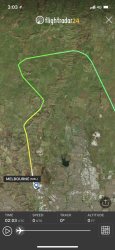To this mug punter, 'pitot tubes' seem to come up as an issue relatively frequently when aircraft incidents occur and I understand that the 'issue' of malfunctioning pitot tubes is exacerbated when pilots are relatively inexperienced.
Given that pilots, as a group, seem to be getting less experienced ( due to expansion of the industry), are there any alternative technologies available or on the horizon to replace pitot tubes, or even the management of inconsistent data?
Ok, let's start with the fact that pitot systems are only being blamed by the internet, NOT by the authorities. Yes, they've had lots of involvement in accidents over the years, but it's still blame by association as far as Lion Air is concerned.
Aircraft fly because of the way they interact with the air mass. The pitot static system measures that interaction. The only other measurement that is relevant, but which is not used by most pilots, is angle of attack data. That is measured separately, and comes into play with stall warning systems.
An aircraft can be safely flown with pressure reading issues, as long as it's recognised, and appropriate action is taken. There are alternative data sources which can be used, which although they won't give a full picture of what is happening, should be enough. IRS or GPS groundspeed, GPS altitude.
But, the question you're asking seems to be, can we continue dumbing down the profession whilst being safe, though the use of technology. To be honest, it's a lot cheaper to teach the pilots to fly properly, as they will use that training over and over again during their careers, to make automation incidents go away. I've not heard of airliner automation making a pilot event go away.
Expansion in the industry isn't the problem. The issue is that the MBAs of the world, who run airlines, with scant regard to safety or the reasons it exists (or doesn't) have been driving the pilot career downwards. Instead of picking the best people, and training them properly from scratch, it's become expedient to force every aspect of training cost onto starry eyed youngsters, and to eventually pay them stuff all once they get to a coughpit. The result has been that the best have gone elsewhere. Sadly, some airlines have now reached the point where the magenta line (or the green one) is all that they know, and anything different will be beyond them.
If this aircraft was lost from just an ADR failure, in day VMC, it will rank right up with AF447 as the most massive failure of piloting imaginable. AF447 was perfectly flyable. The inputs the bloke flying made were beyond comprehension. And that's what MBAs are getting...pilots who cannot fly. The solution has nothing to do with automation.















